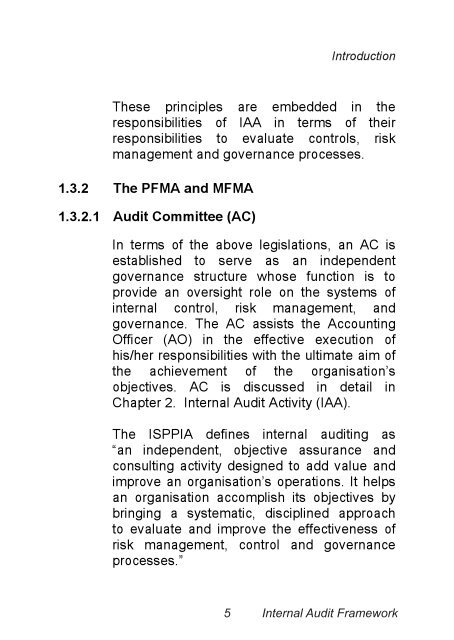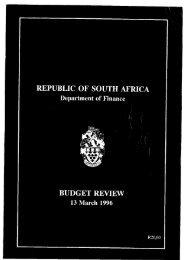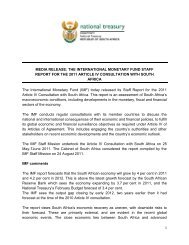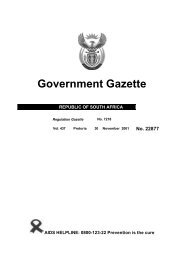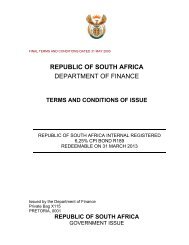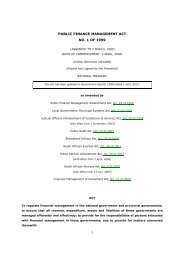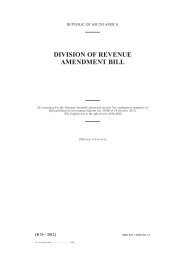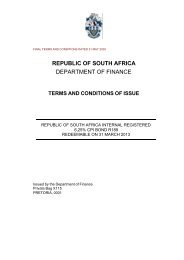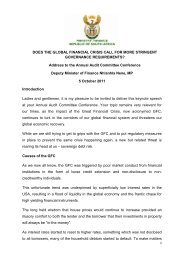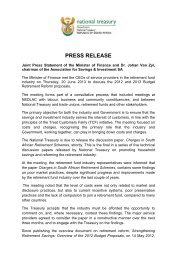Treasury Internal Audit Framework Revised ... - National Treasury
Treasury Internal Audit Framework Revised ... - National Treasury
Treasury Internal Audit Framework Revised ... - National Treasury
Create successful ePaper yourself
Turn your PDF publications into a flip-book with our unique Google optimized e-Paper software.
Introduction<br />
These principles are embedded in the<br />
responsibilities of IAA in terms of their<br />
responsibilities to evaluate controls, risk<br />
management and governance processes.<br />
1.3.2 The PFMA and MFMA<br />
1.3.2.1 <strong>Audit</strong> Committee (AC)<br />
In terms of the above legislations, an AC is<br />
established to serve as an independent<br />
governance structure whose function is to<br />
provide an oversight role on the systems of<br />
internal control, risk management, and<br />
governance. The AC assists the Accounting<br />
Officer (AO) in the effective execution of<br />
his/her responsibilities with the ultimate aim of<br />
the achievement of the organisation’s<br />
objectives. AC is discussed in detail in<br />
Chapter 2. <strong>Internal</strong> <strong>Audit</strong> Activity (IAA).<br />
The ISPPIA defines internal auditing as<br />
“an independent, objective assurance and<br />
consulting activity designed to add value and<br />
improve an organisation’s operations. It helps<br />
an organisation accomplish its objectives by<br />
bringing a systematic, disciplined approach<br />
to evaluate and improve the effectiveness of<br />
risk management, control and governance<br />
processes.”<br />
5 <strong>Internal</strong> <strong>Audit</strong> <strong>Framework</strong>


